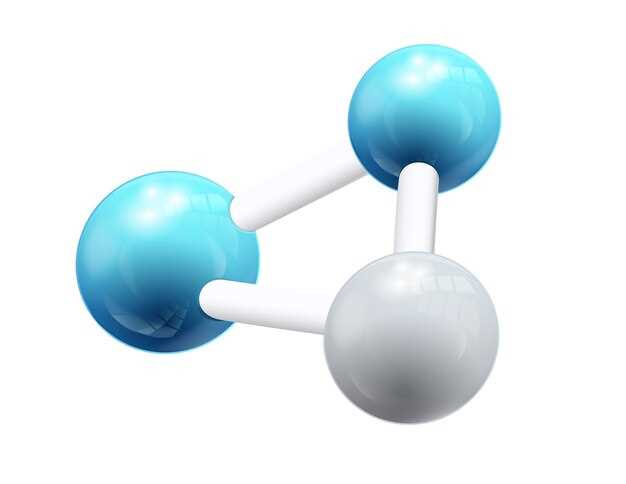
Metronidazole is a potent antibiotic with unique chemical properties that make it highly effective in treating a wide range of bacterial and parasitic infections. Its mechanism of action disrupts the DNA synthesis of harmful microorganisms, making it an essential weapon in the fight against infection.
Whether you’re looking for relief from a stubborn bacterial infection or seeking to prevent the spread of parasites, metronidazole chemistry offers a reliable and efficient solution. Trust in the power of science to restore your health and well-being.
Chemical Structure of Metronidazole
Metronidazole, also known by its trade name Flagyl, is a synthetic antibiotic and antiprotozoal medication. Its chemical structure consists of a nitroimidazole ring attached to a side chain, as shown below:
| Chemical Structure: |
|
The nitroimidazole ring is essential for the biological activity of Metronidazole. It plays a crucial role in disrupting the DNA of anaerobic bacteria and protozoa by forming toxic products in their cells.
Chemical Structure
Metronidazole, also known by its chemical name 2-methyl-5-nitro-1H-imidazole-1-ethanol, has a chemical structure composed of a 5-membered imidazole ring with a nitro group at position 5. The molecular formula of metronidazole is C6H9N3O3, indicating the presence of 6 carbon atoms, 9 hydrogen atoms, 3 nitrogen atoms, and 3 oxygen atoms in its structure.
The chemical structure of metronidazole is essential for its biological activity, as the nitro group undergoes reduction in anaerobic microorganisms leading to the production of reactive compounds that damage DNA and inhibit microbial growth. This unique chemical structure makes metronidazole an effective antibiotic against a wide range of anaerobic bacteria and parasites.
| Chemical Formula | 2-methyl-5-nitro-1H-imidazole-1-ethanol |
|---|---|
| Molecular Formula | C6H9N3O3 |
The Molecular Formula
The molecular formula of Metronidazole is C₈H₁₀N₄O₄. It represents the chemical composition of the drug, showing the number of each type of atom in a single molecule of Metronidazole. The molecular formula is essential for understanding the structure and properties of the compound.
The composition of Metronidazole includes 8 carbon atoms, 10 hydrogen atoms, 4 nitrogen atoms, and 4 oxygen atoms. This specific arrangement of atoms gives Metronidazole its unique chemical and biological properties, making it effective in treating various infections.
Chemical Formula Breakdown
Each element in the molecular formula plays a crucial role in the overall structure and function of Metronidazole:
| Element | Number of Atoms |
|---|---|
| Carbon (C) | 8 |
| Hydrogen (H) | 10 |
| Nitrogen (N) | 4 |
| Oxygen (O) | 4 |
Understanding the molecular formula of Metronidazole is fundamental in comprehending its mode of action, metabolism, and potential side effects. It provides insight into the chemical structure of the drug, aiding in its pharmacological application.
Synthesis
Metronidazole is synthesized by the reaction of 2-methyl-5-nitroimidazole with ethylene oxide. The reaction leads to the formation of a nitromethylimidazole intermediate, which is then reduced to yield metronidazole. This synthetic process is crucial for producing the drug on an industrial scale and ensuring its purity.
Methods of Metronidazole Preparation
Metronidazole is synthesized through a multi-step chemical process. One of the key methods used in its preparation is the reaction of 2-methyl-5-nitroimidazole with ethylene oxide. This reaction leads to the formation of a key intermediate, which is then further reacted with propylene oxide to yield metronidazole.
Another method involves the reaction of chlorohydrin with ammonia in the presence of hydrochloric acid, leading to the formation of 2-amino-5-nitroimidazole. This intermediate is then further reacted to produce metronidazole.
These methods of metronidazole preparation ensure the high purity and quality of the final product, making it suitable for medical use.
Physical Properties

The physical properties of Metronidazole include its appearance and solubility characteristics.
Appearance

Metronidazole is a white to pale yellow crystalline powder. It is odorless and has a bitter taste.
Solubility
Metronidazole is sparingly soluble in water and ethanol, but it is soluble in acetone, methanol, and dimethyl sulfoxide (DMSO).
Appearance and Solubility
Metronidazole appears as a white to pale yellow crystalline powder. It is odorless and has a slightly bitter taste. The solubility of metronidazole in water is approximately 10 mg/mL at room temperature, making it sparingly soluble. However, it is more soluble in alcohol and propylene glycol.
| Property | Value |
|---|---|
| Appearance | White to pale yellow crystalline powder |
| Taste | Slightly bitter |
| Odor | Odorless |
| Solubility in water | Approximately 10 mg/mL |
| Solubility in alcohol | More soluble |
| Solubility in propylene glycol | More soluble |
Biological Activity
Metronidazole exhibits potent antibacterial and antiprotozoal activity. It is effective against a wide range of anaerobic bacteria including Bacteroides fragilis, Clostridium species, and Helicobacter pylori. Metronidazole also shows activity against protozoans such as Trichomonas vaginalis, Giardia lamblia, and Entamoeba histolytica.
This medication works by disrupting the DNA synthesis of the microorganisms, leading to cell death. The selective toxicity of metronidazole towards anaerobic bacteria is attributed to its ability to be reduced by cellular enzymes only present in these microorganisms.

